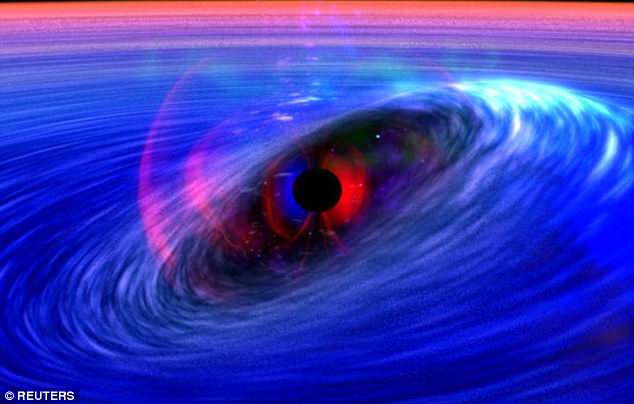What REALLY happens when a black hole eats a star: Astronomers find they gorge and become ‘overfed’ causing massive radiation emissions
It is one of the most violent events in the universe.
Unsuspecting stars that wanders too close to the supermassive black hole in the center of their galaxy are torn apart by the black hole’s gravity, according to Daily Mail.
Now researchers have shed new light on the violent cataclysm called a tidal disruption event (TDE).
The new unified model from the University of Copenhagen’s Niels Bohr Institute and UC Santa Cruz also helps explain recent observations of these extreme events.
The breakthrough study, provides a new theoretical perspective for a fast-growing research field.
‘Only in the last decade or so have we been able to distinguish TDEs from other galactic phenomena, and the new model will provide us with the basic framework for understanding these rare events,’ said coauthor Enrico Ramirez-Ruiz.
In most galaxies, the central black hole is quiescent, not actively consuming any material and therefore not emitting any light.
Tidal disruption events are rare, only happening about once every 10,000 years in a typical galaxy.
When an unlucky star gets torn apart, however, the black hole is ‘overfed’ with stellar debris for a while and emits intense radiation.
‘It is interesting to see how materials get their way into the black hole under such extreme conditions,’ said first author Jane Lixin Dai, assistant professor, who led the study.
‘As the black hole is eating the stellar gas, a vast amount of radiation is emitted.
‘The radiation is what we can observe, and using it we can understand the physics and calculate the black hole properties.
‘This makes it extremely interesting to go hunting for tidal disruption events.’
While the same physics is expected to happen in all tidal disruption events, about two dozen of which have been observed so far, the observed properties of these events have shown great variation.
Some emit mostly x-rays, while others emit mostly visible and ultraviolet light.
Theorists have been struggling to understand this diversity and assemble different pieces of the puzzle into a coherent model.
In the new model, it is the viewing angle of the observer that accounts for differences in the observations.
‘It is like there is a veil that covers part of a beast,’ Ramirez-Ruiz explained.
‘From some angles we see an exposed beast, but from other angles we see a covered beast. The beast is the same, but our perceptions are different.’
The model developed by Dai and her collaborators combines elements from general relativity, magnetic fields, radiation, and gas hydrodynamics.
N.H.Kh

